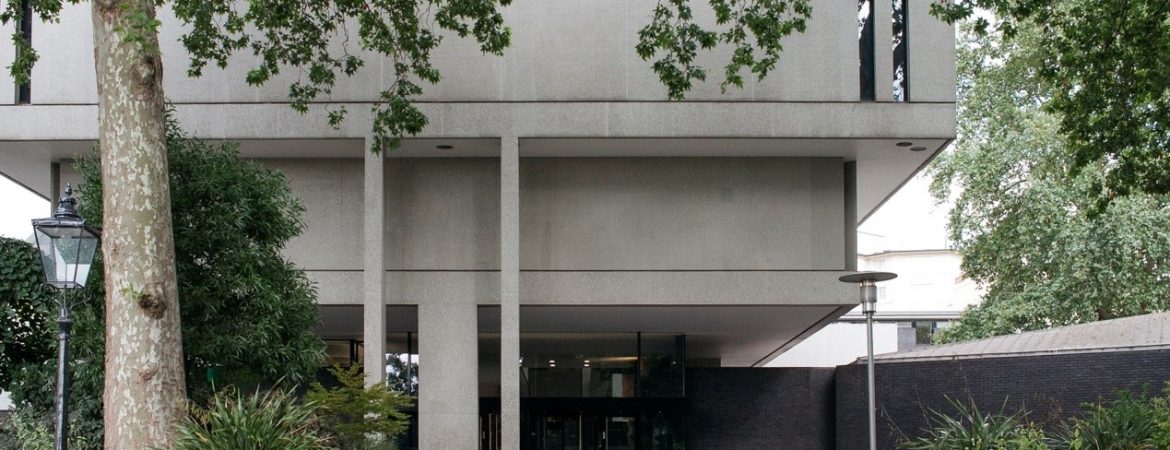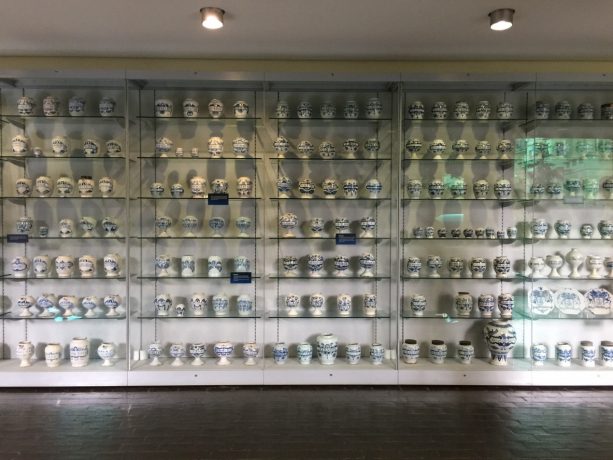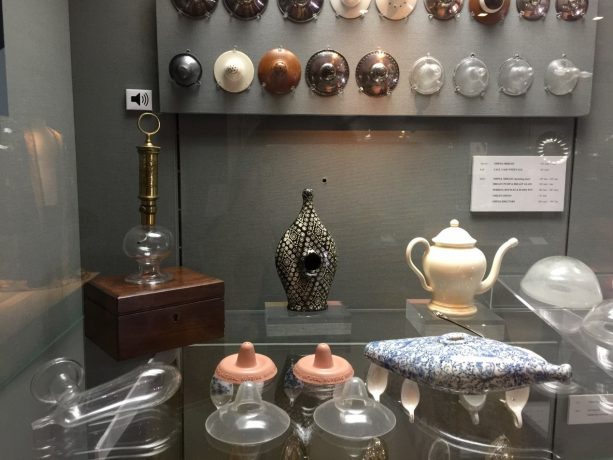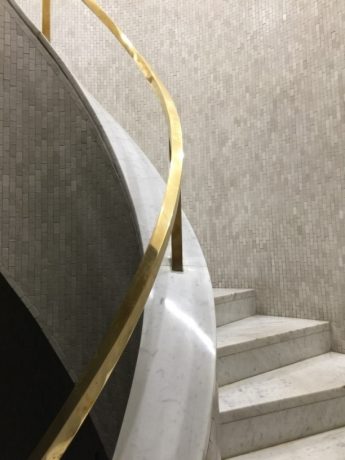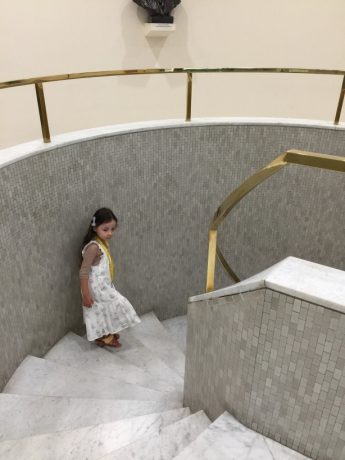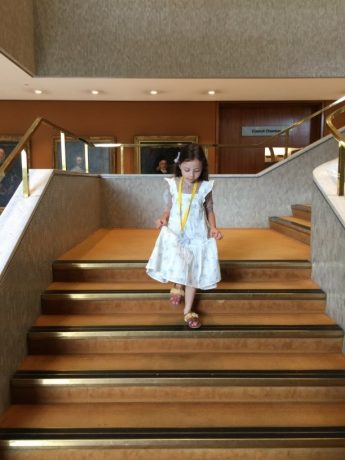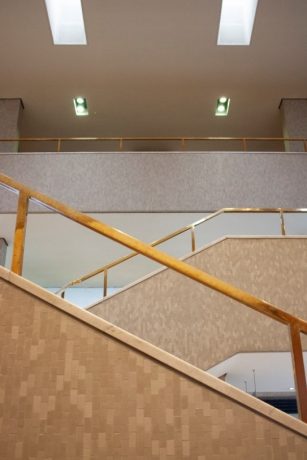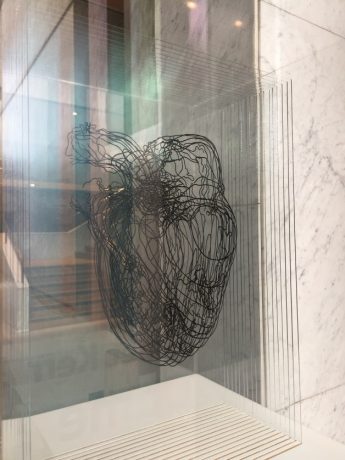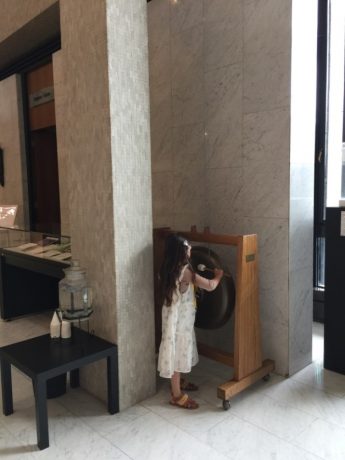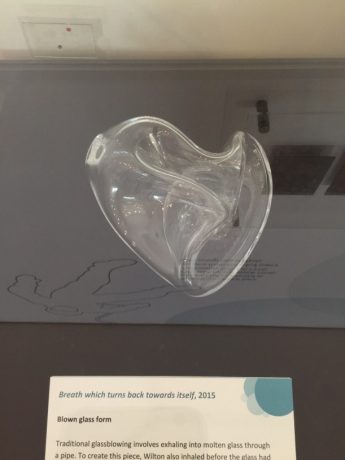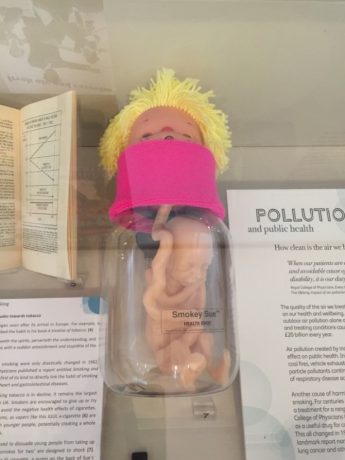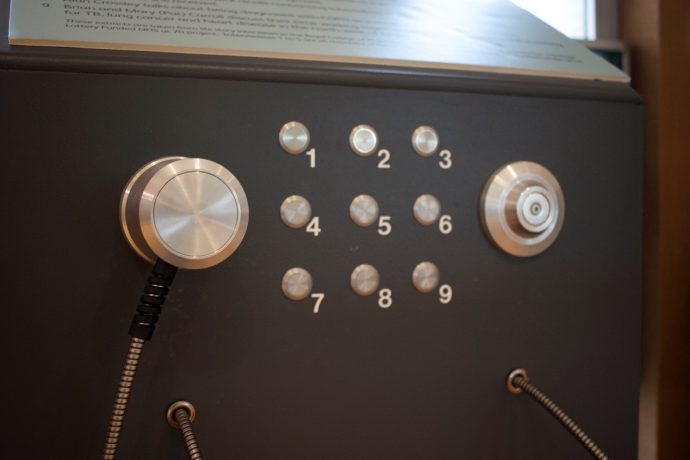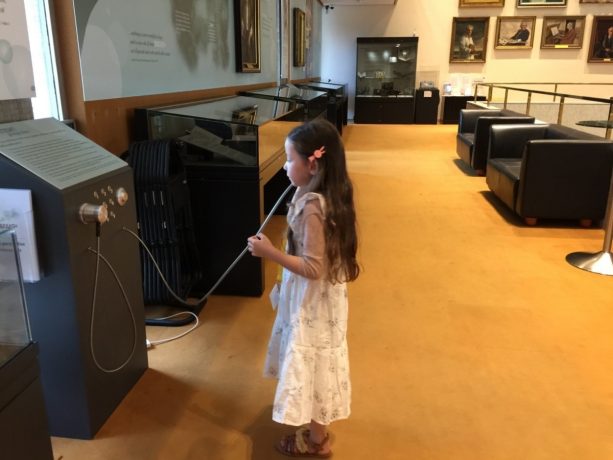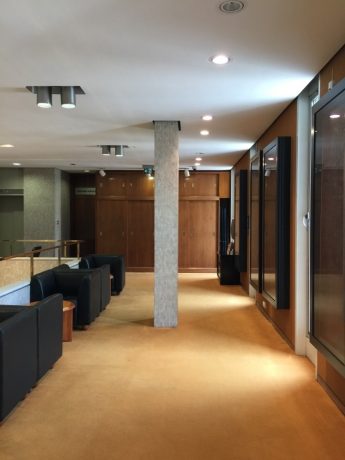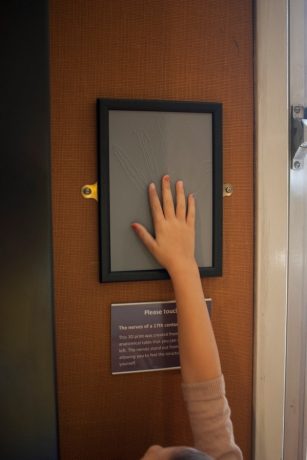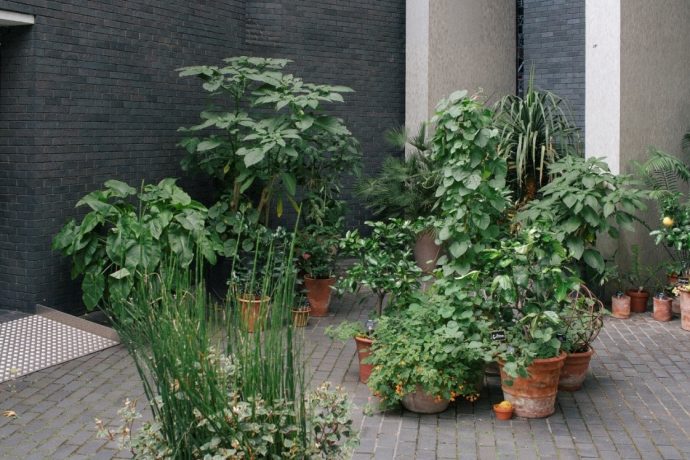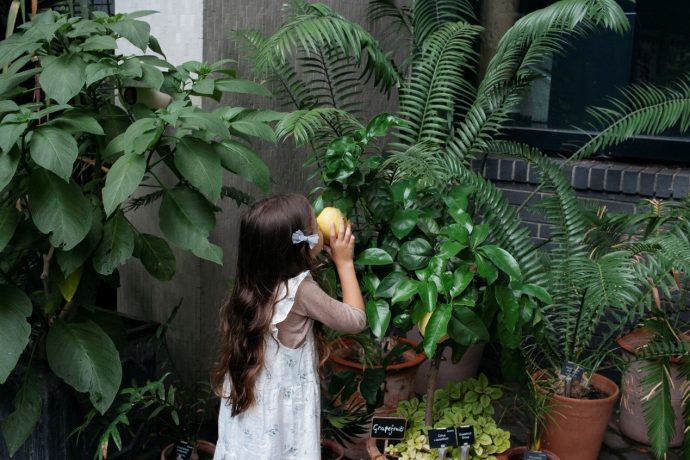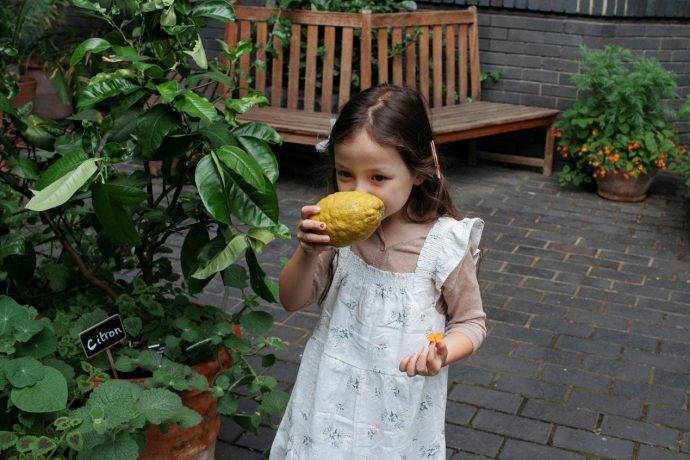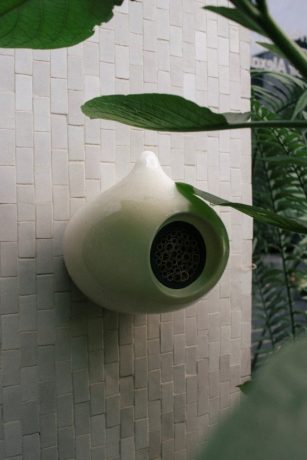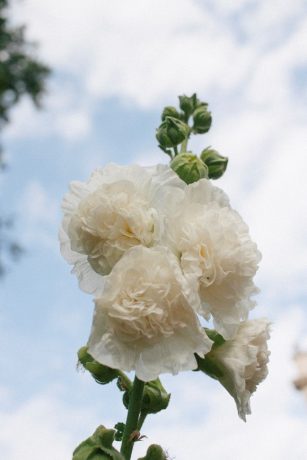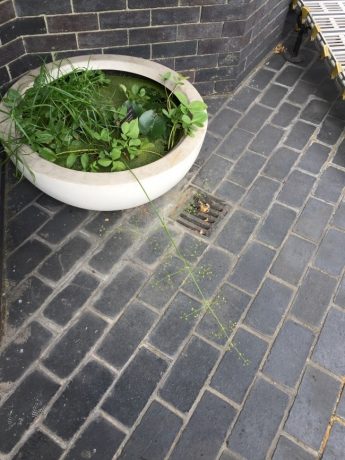I first heard of the Royal College of Physicians because Sir Denys Lasdun of whose work I have greatly admired. Sir Denys Lasdun is best known for his Brutalist piece National Theatre at London’s South Bank. Unlike the concrete beast, The Nation Theatre, RCP is a gentler modernist building with infusion of classical aesthetics. I was intrigued by this ancient college in a modernist building, and exploring this Grade I listed building was not only about its medicinal heritage, but also about the architecture, paintings, silver, archives and rare books collections.
Tucked away from the green leaves of the Regent's Park, the Royal College of Physicians Museum is a striking building sitting amid John Nash’s white terraces. As we arrived at the main entrance, we could see three skinny columns holding up two concrete blocks, which were more aesthetic than structural. The receptionist gave us a visitor pass when we checked in at the front desk. She recommended starting at the collection room, which is located at the lower ground floor. Immediately this giant cabinet full of apothecary jars caught our eyes. These jars were used for the storage of medicines and ingredients. With their decorative Latin labels naming their contents, the jars were designed to function as well as to impress.
The next room was called the Symons Collection of Medical Objects. I particularly liked the collection of nipple shields, breast pumps and feeding bottles. It’s fascinating to see how people were practicing self-care in Georgian times. After walking out of the Symons Collection, you have a view of the entire garden and the elevations of Regency terraces beyond. In fact, the whole wall was constructed with glass panels and steel for “transparency.” Getting back up to the entrance via the spiral staircase felt like a special treat. The light flooded through as we walked up the celestial marble steps.
The entrance leads through a lobby to a triple-height hall at the heart of the building. You get the sense that you are entering somewhere special once you reach the grand central stairs. My five-year-old couldn’t help but pretend to be Cinderella going to a ball. Walking up and down the stairs, you get a closer look at the handmade Italian porcelain mosaic tiles as well as the polished brass handrail.
At the foot of the main staircase, facing south and projecting over the garden, is the Censors’s Room which was transplanted in its totality from the previous college including the oak timber paneling. It’s warmer and grander than all of the other rooms in the building. Strangely, this room with 17th century interiors becomes the heart of this 20th century building. We were very lucky to catch a glimpse of this room as a meeting had just been cleared. You can sense a serious atmosphere and that professional knowledge is not lightly attained.
We took a little break as my five-year-old was a bit tired after playing princess. The museum provides all visitors with drinking water in recyclable paper cups. There are fun donations displayed around the ground floor gallery such as a ceremonial gong and a heart sculpture made of glass panels. It was also reassuring to know that the museum restrooms were incredibly clean and all areas of the building were wheelchair accessible.
Continuing our visit, we arrived at the first floor where the main exhibition “Catch your Breath” was. The exhibition seeks to raise our awareness of breath and breathlessness. It was interesting to know how breathing and health are affected by industrial and domestic pollution. One of my favorite pieces in the exhibition was Jayne Wilton’s “Breath which turns back towards itself.” Unlike traditional glassblowing, the artist inhaled back into the pipe before the glass had cooled. This lung-like form perfectly interprets the common motion of breathing in. My girl paid special attention to “Smokey Sue Smokes For Two”. She also enjoyed listening to the interactive audios about patients describing breathlessness.
You can’t leave the RCP museum without taking a look at the extraordinary autonomy table. Hanging next to the windows were six seventeenth century anatomical tables, made by drying and mounting the blood vessels and nerves of the human body onto blocks of wood which were then varnished and used as a teaching aid for the study of anatomy. The 3D print on the side was a helpful way to feel the texture for the kids.
To access the museum’s medicinal garden, you make a left turn after leaving the main entrance. The RCP garden is a garden of medicinal plants. The garden has been beautifully designed and is a wonderfully calm space in the center of London. The real joy of the garden is in its unique collections of plants that offer living examples of the history of medicine and drugs. Sitting under the giant oriental plane tree, we could see where we were just minutes ago. Also look out for the narrow windows, Lasdun’s arrow slits are everywhere. In contrast to the Regency architecture of the adjoining terraces and villas, the RCP building looks like an ocean liner.
While I was busy reading the plant names and their medical uses, my child was eager to be out exploring in the garden. She was trying to smell the plants from one to another. There was also a bug hotel hidden behind a tropical plant for keen observers. It was tempting for her to pick the flowers and fruit so I had to remind her to keep her hands off from time to time. It’s an inspiring place to connect the kids with nature and learn about their uses.
The Royal College of Physicians building might not be an obvious choice for the kids, but it is remarkable in many ways; it’s definitely worth a visit if you are in into modernist architecture. My child had fun looking at old paintings, role playing princess, smelling the herbs and plants in the garden. Plus Marylebone Green Playground with spiraling concrete folly and a slide is right around the corner to let off some steam. The annual Freize Art fair is also next door at the Regent’s Park. So why not make that part of your day trip if you can?
